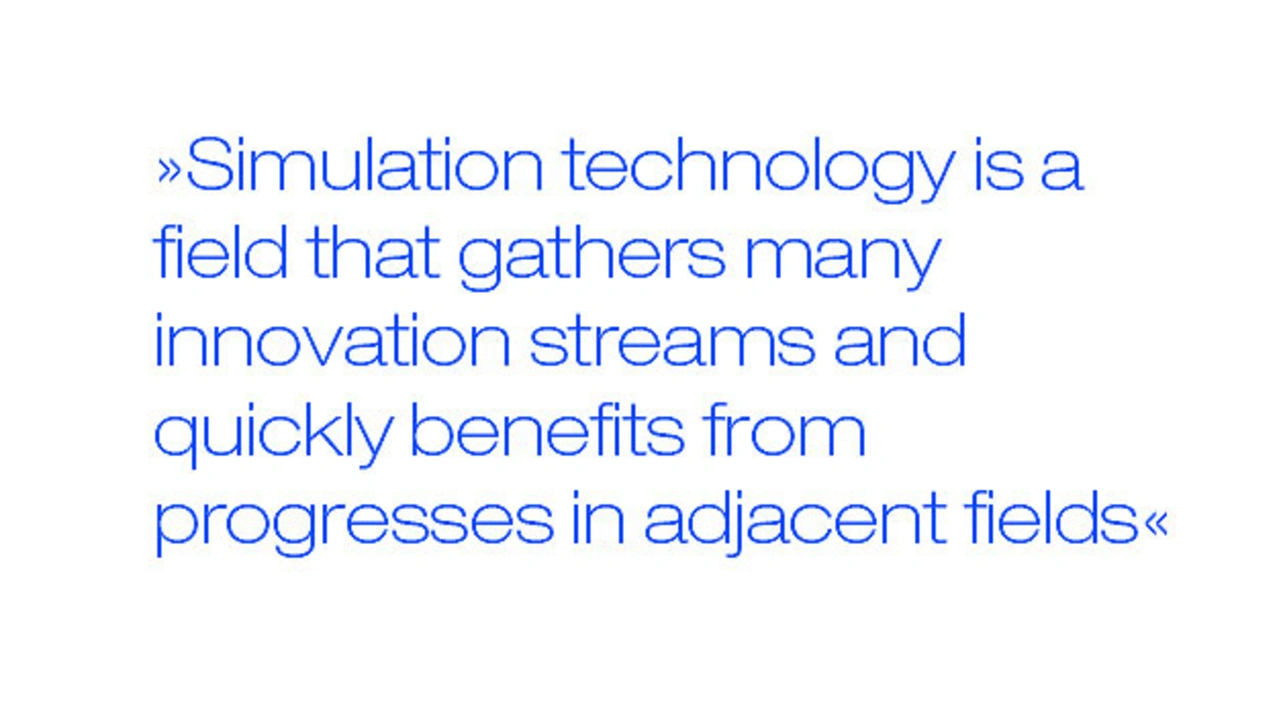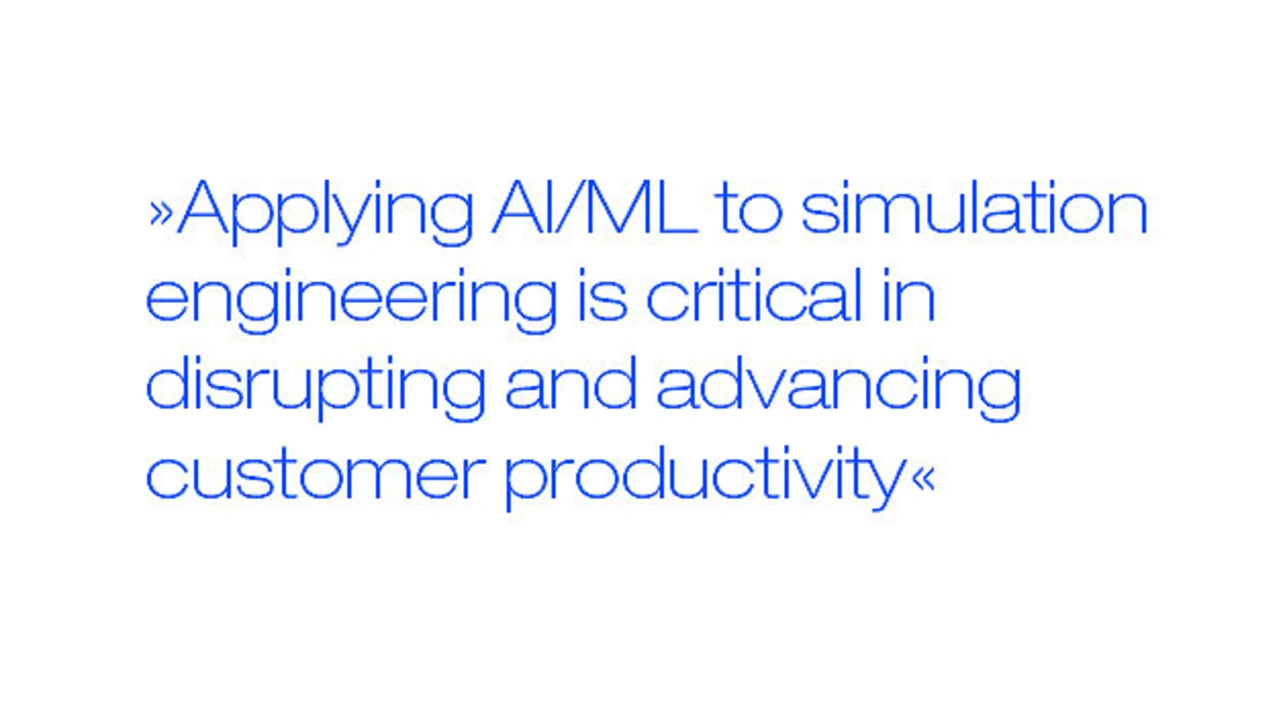Software for IC Designers
Simulating – with AI
What can simulation software currently do to make the work of designers easier? Christophe Bianchi, EMEA High Tech and Semiconductor Director at Ansys, answers these and other questions in this interview.
? What is the current significance of semiconductor simulation? Is it only relevant for the high-end nodes for processors?
! Christophe Bianchi: To meet demanding reliability requirements for Wi-Fi systems, 5G mobile devices and high-speed wireless components, customers require a comprehensive multiphysics simulation solution that addresses power, reliability, and thermal issues across the entire chip, package and system.
This not only applies to high-end nodes (7, 5 and 3nm) but is altogether critical to Analog, Mixed-Signal, HighVoltage and RF processes as well as 2.5D and 3D ICs where modeling and simulation of Multiphysics also need to apply to RDL interconnect and interposer layers in CoWoS (Chip on Wafer on Substrate) and info (Integrated Fanout Wafer Level Packaging).
Each process and technology correspond with a set of modeling and simulation solutions, whether it is transistor-level power integrity analysis for analog, mixed-signal and full custom ICs, or SOC-level power integrity and ESD/EMC at chip and system-level.

Ansys’s Analog and Mixed-Signal solution boasts a comprehensive suite of analyses spanning from early stage to signoff. It can effectively handle a variety of design styles such as SerDes, data converters, power management IC, embedded memories, DRAM, Flash, FPGA and chip image sensors. Additionally, Ansys Analog and Mixed Signal solution delivers numerous analysis capabilities including substrate noise analysis, RDSON analysis, thermal and ESD analysis to address challenges in different designs. It also provides a configurable cockpit for customers to customize their analysis based on their workflows.
? What can today's simulation technology do?
! Bianchi: Based on the fundamental principles of modeling, physics, mathematics and computer science, simulation gives engineers the power to see how their designs will behave in millions of real-world scenarios, while reducing or even eliminating the need for costly physical testing.
What simulation makes possible: 5G and 6G Communications, Autonomous Vehicles, Personalized Healthcare, Electrification, Next Generation Energy…
When focusing on Electronics, simulation covers a very wide range of critical physics such as:
- electromagnetic (EM) crosstalk software identifies and ranks the nets that are most susceptible to EM and substrate crosstalk,
- transistor-level IR drop power noise and electromigration reliability analysis software for analog and mixed-signal chips,
- power integrity and reliability signoff for ICs. Analyze full-chip IR drop, electromigration, and thermal reliability.
- electromagnetic simulation software for designing and simulating high-frequency electronic products such as antennas, PCBs, IC packages, etc.
- electronic thermal management for IC packages, PCB and electronic assemblies,
- mechanical stress & warpage analysis to ensure reliability with thermal cycling of heterogeneous assemblies (3DIC, PCB, …)
- power integrity, signal integrity and EMI analysis of electronic packages and PCBs, as well as power analysis and RTL power reduction software tool for optimal IC design.
The integration into the broader CAD/CAE toolchain also includes the modeling of inductor, transformer, and transmission lines to synthesize complex spiral and T-line devices, to nanophotonic devices, processes, and materials as well as quantum mechanical behavior in atomically thin semiconductor layers, enabling engineers to accurately characterize band structure, gain and spontaneous emission in multi-quantum well structures.
All of Ansys’s technologies and core engines for extraction, simulation, electromigration and self-heat analysis are certified for all major technology nodes and correlated several times against spice and silicon measurements. These are all certified across several major foundries and are the preferred signoff tools for several major semiconductor companies.
? How complicated are modern simulation tools to use?

! Bianchi: Although Ansys’s Multiphysics analysis and verification tools solve very complex equations their use is facilitated by the fact that these solutions are cloud-native which provides unparalleled capacity to speed up completion times for even the largest finFET integrated circuits (IC) and 3D/2.5D multi-die systems.
Moreover, the seamless integration of these sign-off verification products in the main EDA platforms and environments further facilitates the access to the IC designers. As an example, Ansys’s RedHawk™ Analysis Fusion integration with Synopsys’ IC Compiler II™ and Fusion Compiler™ introduces in-design power integrity analysis and fixing capabilities in designers' flows offering signoff accuracy results during the physical design step.
? What impact will AI techniques like machine learning have on simulation?
! Bianchi: Artificial intelligence and machine learning (AI/ML) have been around for more than 30 years, and the field has advanced from concepts of rule-based expert systems to machine learning using supervised learning and unsupervised learning to deep learning. AI/ML technology has been applied successfully to numerous industries such as natural language understanding for intelligent agents, sentiment analysis in social media, algorithmic trading in finance, drug discovery, and recommendation engines for ecommerce.
People are often unaware of the role AI/ML plays in simulation engineering. In fact, AI/ML is applied to simulation engineering and is critical in disrupting and advancing customer productivity. Advanced simulation technology, enhanced with AI/ML, super-charges the engineering design process.
We’ve embraced AI/ML methods and tools for some time, well before the current buzz around this area. Physics-based simulation and AI/ML are complementary, and we believe a hybrid approach is extremely valuable. We are exploring the use of these methods to improve the runtimes, workflows, and robustness of our solvers.
On a technical level, we are using deep neural networks inside the Ansys RedHawk-SC product family to speed up Monte Carlo simulations by up to 100x to better understand the voltage impact on timing.
? What challenges do simulation tool providers face? What is currently being developed and researched?

! Bianchi: Simulation is truly pervasive and at the core of every engineering solution. It is a field that gathers many innovation streams and quickly benefits from progresses in adjacent fields. Our technology strategy spans from improved simulation methods with research on novel numerical methods such as IGA, XFEM, Inverse and Stochastic and Bayesian hybrid models, to non-conformal meshing and morphing, whilst we invest in increasing performance by leveraging Cloud infrastructure, high performance computing, including future exascale and quantum computing solutions as well as AI/ML techniques for augmented simulation.
From a user perspective, immersive user experiences including augmented and virtual reality is another research area aimed at deploying simulation to a wider audience.
Finally, specific industry verticals remain a top priority for Ansys with developments and further innovations in the fields of Autonomy, Electrification, 5/6G, digital healthcare, ICME and Additive Science as well as Model-Based System Engineering.





